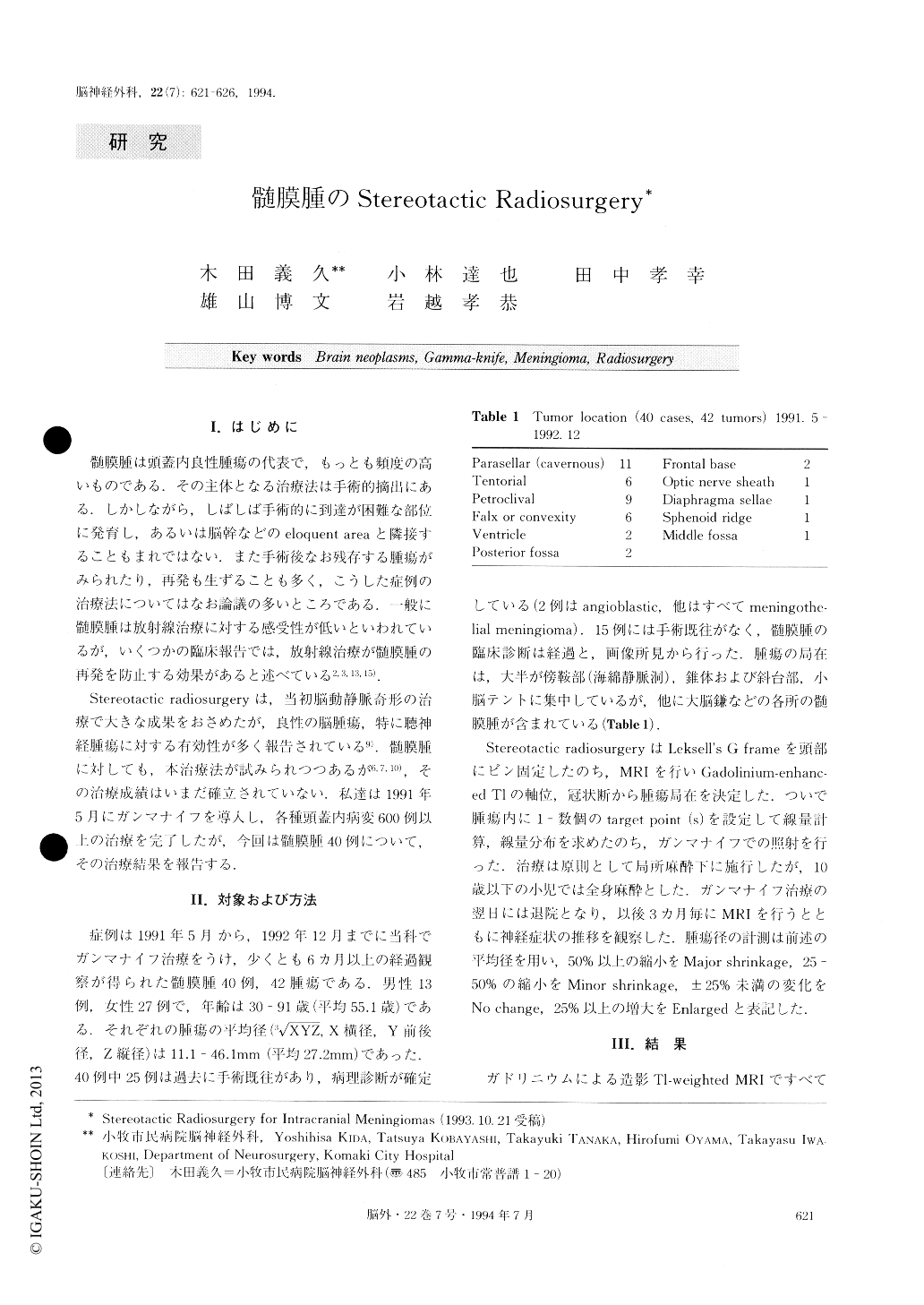Japanese
English
- 有料閲覧
- Abstract 文献概要
- 1ページ目 Look Inside
I.はじめに
髄膜腫は頭蓋内良性腫瘍の代表で,もっとも頻度の高いものである.その主体となる治療法は手術的摘出にある.しかしながら,しばしば手術的に到達が困難な部位に発育し,あるいは脳幹などのeloquent areaと隣接することもまれではない.また手術後なお残存する腫瘍がみられたり,再発も生ずることも多く,こうした症例の治療法についてはなお論議の多いところである.一般に髄膜腫は放射線治療に対する感受性が低いといわれているが,いくつかの臨床報告では,放射線治療が髄膜腫の再発を防止する効果があると述べている2,3,13,15).
Stereotactic radiosurgeryは,当初脳動静脈奇形の治療で大きな成果をおさめたが,良性の脳腫瘍,特に聴神経腫瘍に対する有効性が多く報告されている9),髄膜腫に対しても,本治療法が試みられつつあるが6,7,10),その治療成績はいまだ確立されていない.私達は1991年5月にガンマナイフを導入し,各種頭蓋内病変600例以上の治療を完了したが,今回は髄膜腫40例について,その治療結果を報告する.
Stereotactic radiosurgery for intracranial menigiomas was attempted using a 201-source cobalt gamma knife. Forty patients bearing 42 tumors were involved in this study. Their ages ranged from 30 to 91 years, with an average of 55.1 years. The most frequent sites of origin were the parasellar and petroclival regions. The mean tumor diameter was 27.2mm and the marginal tumor dose of radiosurgery ranged from 10 to 20Gy, depend-ing on tumor location and size. Serial imaging studies with MRI were obtained in all 40 cases, in which minor tumor shrinkage was demonstrated in 7.9%, 40.0% and 53.3% at 6, 12 and 18 months after radiosurgery respec-tively. Only two tumors became enlarged after the treatment. Obvious low signal intensity on MRI, in-dicating central tumor necrosis, was found in 32% at 12 months and 40% at 18 months. Four large tumors over 40mm in mean diameter were treated by staged radiosurgery with intervals of 1.5 to 7 months. A simi-lar good response was able to be obtained in all 4 cases, even though they were treated with a marginal close less than 12Gy.
Symptomatic edema occurred in 5 cases (12.5%) within 12 months and required corticosteroid therapy and hyperosmotic diuresis. In conclusion stereotactic radiosurgery has proved to be an effective and relatively safe method for the treat-ment of intracranial meningiomas.

Copyright © 1994, Igaku-Shoin Ltd. All rights reserved.


